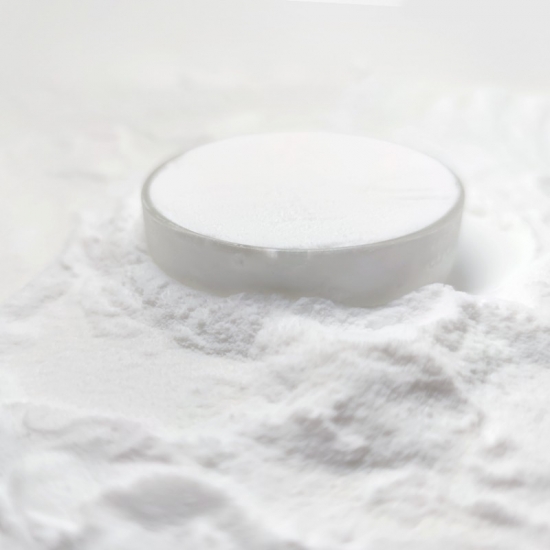 Whatsapp us
Whatsapp us
في صناعة الطلاء، تتم إضافة الأصباغ أو الحشوات لتحقيق توزيع موحد في طبقة الطلاء، مما يخلق سطحًا خشنًا للغاية. كلما كانت جزيئات السطح أكبر، زادت الخشونة الدقيقة، مما أدى إلى انخفاض اللمعان. في إنتاج الطلاءات غير اللامعة، غالبًا ما يتم استخدام مواد خفيفة الوزن مثل كربونات الكالسيوم المترسبة أو التلك بكميات كبيرة، مما يتجاوز تركيز حجم الصباغ الحرج ويؤدي إلى مشكلات مثل ضعف الخصائص الفيزيائية لطبقة الطلاء، مثل الطبقات والترسيب الصعب. إن استخدام مواد التلميع يمكن أن يمنع هذه المشاكل.
يتم تصنيف عوامل التلميع إلى أنواع عضوية وغير عضوية، مع كون السيليكا البيضاء عامل تلميع غير عضوي بارز. تركز هذه المقالة على تطبيق عامل تلميع السيليكا الأبيض في طلاءات الخشب ذات الأساس المذيب:
الطلاءات عالية الصلابة
تحتوي الطلاءات عالية الصلابة على نسبة صلابة عالية ومذيبات متطايرة منخفضة، مما يؤدي إلى زيادة استخدام عوامل التلميع واللزوجة. يصبح حجم الجسيمات لعامل التلميع أمرًا بالغ الأهمية، ويجب اختياره بناءً على سمك الفيلم الجاف. قد يؤدي اختيار عامل صقل بحجم جسيمات صغير إلى انخفاض كفاءة الصقل، وزيادة الاستهلاك، ومشاكل مثل التراكم، والتبييض، وضعف الشفافية. ومن ناحية أخرى، فإن اختيار عامل تلميع بحجم جسيمات أكبر يمكن أن يلبي متطلبات اللمس مع تحقيق تأثير التلميع المطلوب.
الورنيش الشفاف
تستخدم الورنيش الشفاف في المقام الأول لتوفير لمعان للسطح. تحقق الورنيشات الشفافة غير اللامعة انعكاسًا منتشرًا عن طريق إضافة عوامل التلميع. يجب أخذ عوامل مثل الكفاءة، وحجم الجسيمات، والشفافية، وخصائص مقاومة الترسيب، والتشتت، وملمس السطح في الاعتبار عند تحديد جرعة عامل التلميع. يجب أن يكون محتوى السيليكا الأبيض في عوامل التلميع للطلاءات أعلى من 95%، مع التوصية بالمعالجة بالشمع لمنع الترسب والانسداد. تعمل معالجة الشمع على تعزيز التوافق مع أنظمة الطلاء القائمة على المذيبات، وتحسين مقاومة الخدش، وتعزيز انزلاق الفيلم، على الرغم من أنها قد تقلل قليلاً من كفاءة التلميع والشفافية.
الدهانات الملونة
في أنظمة الطلاء الملون، يمكن للأصباغ والمواد المالئة الأخرى أن توفر تأثيرات التلميع، ولكن الاستخدام المفرط قد يؤدي إلى الإضرار بالخصائص الميكانيكية والطقس للطلاء. إن إدخال عوامل صقل السيليكا البيضاء، إذا تم اختيارها بشكل مناسب، يمكن أن يحل جزئيًا محل بعض عوامل تلميع عملية الطور الغازي الباهظة الثمن، مما يلبي متطلبات جودة المنتج مع تقليل التكاليف بشكل كبير.
يوصي المنتج
| عامل تلميع السيليكا |  |
||
| اكتب | 740 | 750 | 770 |
| مساحة السطح المحددة، م²/جم | 300-380 | 300-380 | 320-400 |
| فقدان التسخين: ¼105° 2 ساعة ¼، % | .05.0 | .05.0 | .08.0 |
| خسارة الاشتعال: ¼1000° 2hï¼% | .07.0 | ||
| SiO2 (خسارة بعد الإشعال)، % | ≥99.0 | ||
| الرقم الهيدروجيني ¼5% تعليق ¼ | 5.0-7.0 | ||
| امتصاص DBP، سم مكعب/جم | 2.00-3.50 | ||
| الملح في صورة NA2SO4، % | ≥200 | ||
| البياض | ≥94.0 | ||
| حجم المسام | 2.0±0.2 | ||
| صفاء المكشطة | ≥21 | ≥23 | ≥36 |